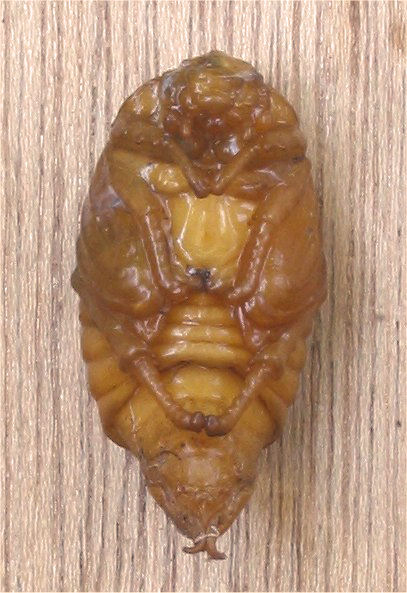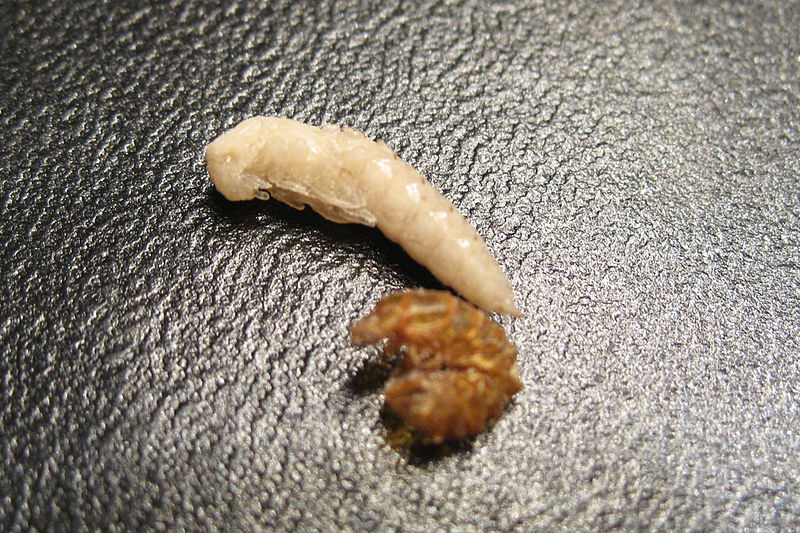
Reproduction
Upis ceramboides are dioecious. The male will chase around the female beetle if the female beetle will not surrender to the male. Once the female is tired and stops running, the two beetles will mate. After fertilization, the female will burrow into the soil, sand, or wood to lay over 500 eggs (Mealworms and Darkling beetles 2009). These eggs are about the size of a sentence period at this point. Darkling beetles follow a reproductive cycle called complete metamorphism.
Small, white eggs hatch into mealworms (larvae) after 9 to 14
days (Dunn 1996). The mealworms molt several times as it feeds and grows. The
larvae develops into the pupal stage which lasts from 3 weeks to 9
months. The pupal stage is a sessile and non-feeding phase.
Following the pupaling phase the pupa splits and a beetle emerges.
The adult Upis ceramboides appears to have a soft ,white
body. But after only one day the beetle turns dark brown, almost
black
(Mealworms and Darkling beetles 2009). After the beetle browns it is sexually mature and ready to
mate (Dunn 1996). The entire life cycle only lasts about a year.

Many Darkling beetles lay eggs in the crevices of bark and wood (Arnett 1985). Upis ceramboides also lay eggs in dry, sandy areas where larva form long, wandering tunnels during development (Charney 2010 ). The trails account for the majority of linear trails in the western states.
